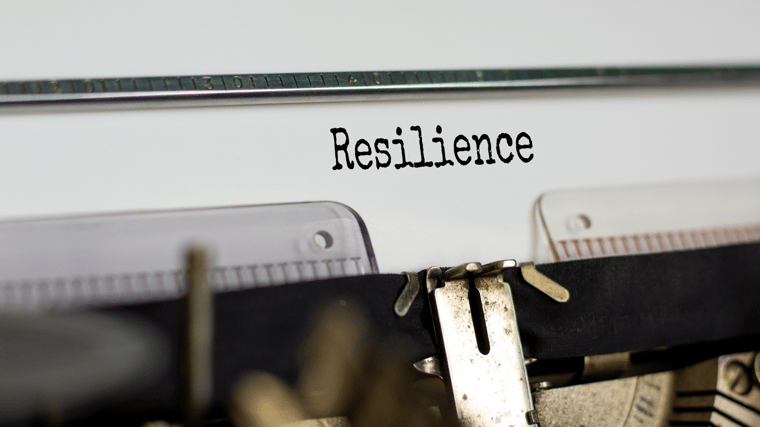“Psychological safety” has gone from buzzword to mainstream, thanks in part to a massive, two-year study conducted by Google back in 2015. Working from home during the pandemic made nurturing psychological safety at work particularly challenging. Now, many companies find themselves with a hybrid of in-office and remote teams. Psychological safety is more important than ever—yet no less tricky to achieve.
Thankfully, we have some simple and effective strategies to help individuals and organizations create a sense of psychological safety at work.
What is psychological safety?
While the concept of psychological safety might seem fairly new, it has actually been around for more than two decades. Dr. Amy Edmondson, Professor of Leadership and Management at Harvard Business School, first coined the phrase in 1999. Exactly what is psychological safety in the workplace? Dr. Edmondson describes psychological safety at work as “a belief that one will not be punished or humiliated for speaking up with ideas, questions, concerns, or mistakes and that the team is safe for interpersonal risk-taking.”
Edmondson’s work was the inspiration for the now-classic study done by Google. The tech giant identified psychological safety as one of the key ingredients that was missing from their workplace back in 2015; so they went about collecting data to gauge psychological safety on their teams and then implemented various tools to try and improve the perception of safety over time. Sometimes, these tools were simple things like kicking off team meetings by sharing, in a non-confrontational way, risks that people took during the week. With time, the feeling of safety increased—as well as the sense of clarity and structure. Employees were more free to be creative and to bring ideas forward when the threat of humiliation was gone.
In other words, knowing how to create psychological safety at work allows teams the comfort to be vulnerable. And vulnerability is a key component in creativity, collaboration, innovation, and productive risk-taking.
Interpersonal risks and psychological safety at work
Taking risks leads to breakthroughs. Unfortunately, people are less likely to take professional risks when they lack a sense of psychological safety. Doing so is not just uncomfortable; it can feel like inviting a life-or-death threat.
If that seems extreme, you can blame the human brain. When challenged by a colleague or superior, the amygdala—the brain’s “alarm bell”—triggers a fight-or-flight response, overriding other brain functions and disrupting strategic thinking. This can have a negative impact on not only the individual but their team and the organization as a whole.
Cultivating psychological safety in the workplace
Leaders who understand how to create psychological safety can avoid that sense of threat. A mutual sense of safety between leadership and their teams can encourage personal risks. This, in turn, will drive better engagement, productivity, and innovation. Here’s how:
Practice the Platinum Rule
You’ve heard of the Golden Rule, “Do unto others as you would have them do unto you.” But a basic directive of psychological safety is to treat others not as you want to be treated, but as they want to be treated. This is what is known as the Platinum Rule.
The Platinum Rule philosophy takes into account a diversity of cultures, needs, and feelings. It also recognizes that what is important to one person may not be important to another. This could mean using inclusive language or using a person’s preferred pronouns.
The Platinum Rule takes an extra bit of empathy, but it goes a long way toward making others feel psychologically safe.
Encourage curiosity
Curiosity is invaluable as a catalyst for change. It opens up possibilities when it comes to looking toward the future and seeking out your business’s next steps. Encouraging curiosity helps build psychological safety. This is because a cornerstone of curiosity is an eagerness to learn and try new things.
Keep in mind the old adage that “There are no stupid questions.” People should feel comfortable taking on new topics they aren’t already experts in. Providing a non-judgemental platform for people to express ideas by asking questions or making suggestions can catapult the business in a new, exciting direction.
Focus on healthy conflict
Psychological safety isn’t the same as tranquility. People need to feel comfortable enough to bring their true selves and their best ideas to the table, but they also need healthy challenges that lead to productive conflict.
Think of “conflict” here more as “debate”. When teams truly feel psychologically safe, it means they aren’t tethered by a fear of messing up or looking foolish. It also means they feel comfortable challenging their peers’ ideas and having their own contributions challenged. After all, no idea is perfect from the outset. We all need help working out the kinks.
A psychologically safe workplace values collaboration over opposition. Conflict, when it does show up, is in the form of healthy competition, where team members work toward a common goal.
Promote open communication
Communication is fundamental within any functioning workplace, but it’s especially important when it comes to creating an environment that values psychological safety. After all, the whole point is that people feel comfortable speaking up!
Make sure to keep avenues for communication open across departments and leadership hierarchies. Be sure that feedback is clear and constructive.
And now more than ever, recognize the need for candid dialogue around racial and cultural inequities in the workplace. Healthy communication pathways that allow for honesty, vulnerability, and openness are essential to psychological safety.
Foster mutual trust
We shouldn’t need to say this, but the importance of trust must not be overlooked. As Dr. Amy Edmondson’s original research says, psychological safety “describes a team climate characterized by interpersonal trust and mutual respect in which people are comfortable being themselves.”
Value effectiveness over efficiency
There’s no way to ignore it: the bottom line is important. It’s how businesses stay in business. But when leadership views their teams as just a means to that successful financial end, the importance of people falls by the wayside… along with their psychological safety.
Instead, remember the individual and cultivate community. The time and effort invested can pay off in measurable ways. Better communication can increase employee morale and engagement. Enhanced creativity and collaboration can lead to innovations and heightened productivity. Overall, there will be more job satisfaction and less turnover.
Think outside of the box
As the business world moves forward at an ever-increasing pace, innovation can mean the difference between success and failure. Cultivating the space needed to take risks and stretch creative boundaries is essential for innovation and driving businesses toward a successful future.
Building psychological safety at work allows people to feel comfortable sharing even out-of-the-box ideas. This freedom could be the spark that ignites the company’s evolution and growth—and there will be no limit to how far they can go.




